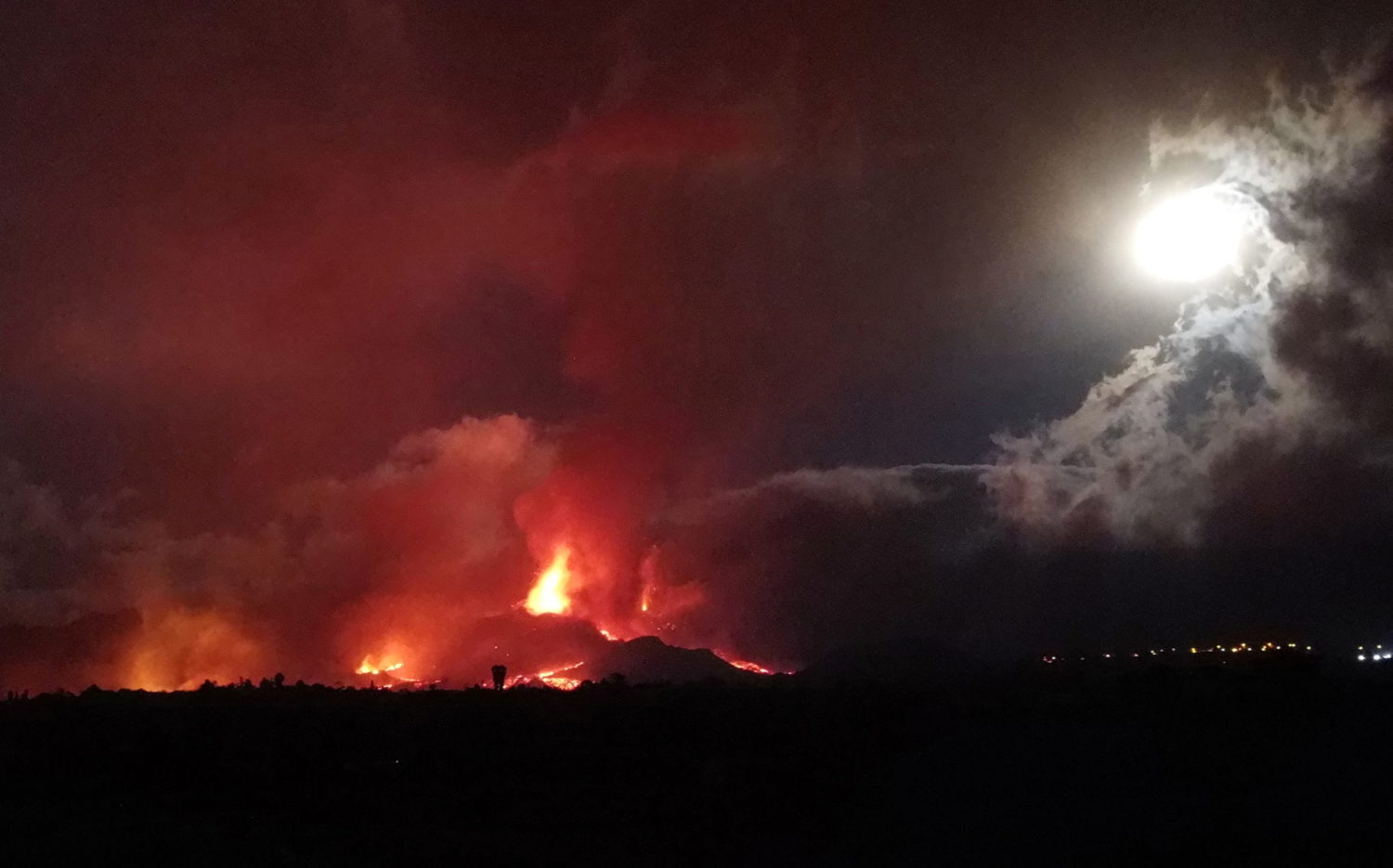
MADRID (Reuters) – Authorities on the Spanish island of La Palma ordered residents of three coastal towns to stay indoors on Monday after a new stream of lava crashed into the ocean, sending thick clouds of potentially toxic gases high into the sky.
A third tongue of lava from the Cumbre Vieja volcano, which has been erupting for two months, reached the water around midday (12:00 GMT) a few kilometers north of where two previous flows hit the sea.
Drone footage from the local council showed white clouds billowing out of the water as the red hot molten rock slid down a cliff into the Atlantic.
Residents in Tazacorte, San Borondon and parts of El Cardon were told to stay inside with doors and windows shut as strong winds blew the cloud back inland.
Soldiers from the Military Emergency Unit were deployed to measure air quality in the area.
The airport was also closed and is likely to remain so for up to 48 hours due to the unfavorable weather conditions, said Miguel Angel Morcuende, technical director of the Pevolca eruption response committee.
Residents in the capital Santa Cruz had been advised to wear masks for the first time since the eruption began due to high concentrations of particulate matter and Sulphur dioxide in the air, he said.
According to the Copernicus disaster monitoring program, lava flows have damaged or destroyed some 2,650 buildings since Sept. 19, forcing the evacuation of thousands from their homes on the island, part of the Canaries archipelago.
(Reporting by Nathan Allen, editing by Andrei Khalip and Angus MacSwan)





